Lesser-Known Villages in the Swiss Alps: Mountain Treasures

Lesser-Known Villages in the Swiss Alps: Mountain Treasures
While Switzerland's renowned destinations like Zermatt and St. Moritz attract millions of visitors annually, the Alps harbor numerous enchanting villages that remain refreshingly authentic and uncrowded. Nestled in dramatic valleys, perched on sunny terraces, or tucked beside crystalline lakes, these hidden gems preserve centuries-old traditions, distinctive architecture, and a way of life intimately connected to the surrounding mountains. This guide unveils Switzerland's most charming Alpine villages where visitors can experience the country's renowned natural beauty and cultural richness while escaping the tour buses and souvenir shops that dominate more famous Swiss resorts.
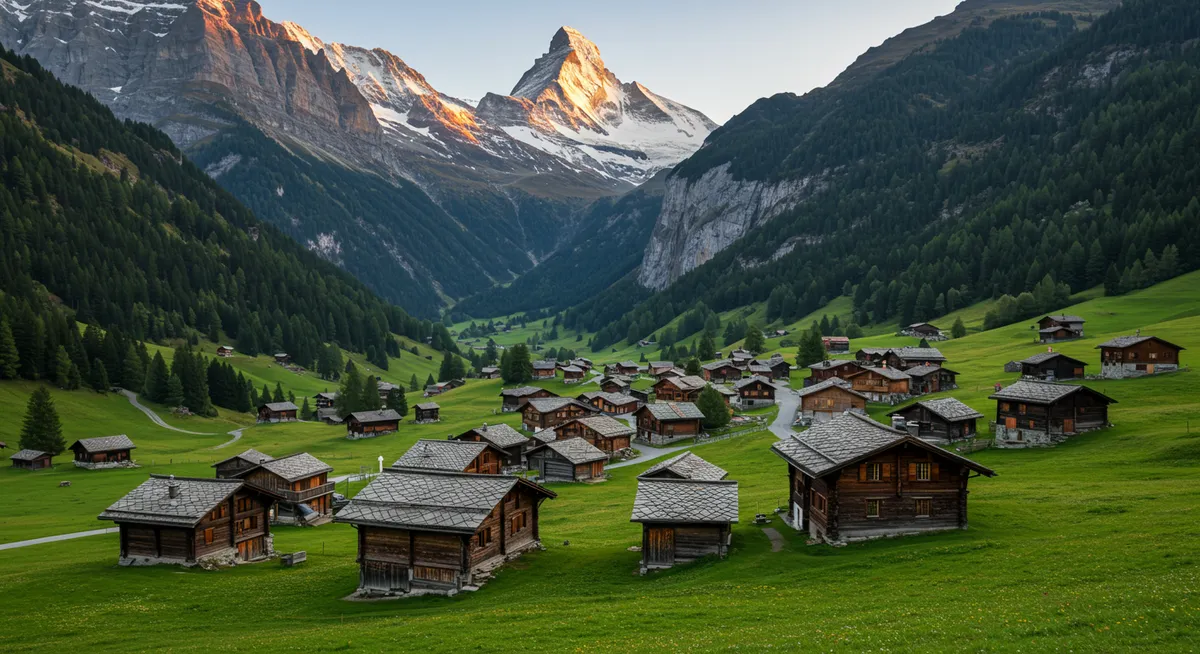
1. Mürren: Car-Free Alpine Splendor
Perched on a sunny terrace 1,650 meters above the Lauterbrunnen Valley, Mürren presents one of the Alps' most spectacular settings—directly facing the iconic trio of the Eiger, Mönch, and Jungfrau. This traditional Walser mountain village has preserved its authentic character by remaining entirely car-free, accessible only by cable car or mountain railway. Despite hosting pioneering winter tourism and the world's first alpine ski races in the 1920s, Mürren maintains a peaceful atmosphere that stands in stark contrast to Switzerland's busier mountain resorts.
What Makes It Special
- Unparalleled Views: Front-row panoramas of the Bernese Alps' most dramatic peaks
- Car-Free Tranquility: No road access means peaceful streets and pristine mountain air
- Traditional Architecture: Well-preserved wooden chalets with decorative carvings and flower boxes
- Alpine Sports History: Birthplace of modern alpine skiing competitions and home to the historic Kandahar Ski Club
Local Experiences
Ride the cable car to the Schilthorn summit (2,970m) for breathtaking 360-degree views and to visit the Piz Gloria revolving restaurant, famous as a filming location for the James Bond movie "On Her Majesty's Secret Service." Hike the panoramic North Face Trail, which offers perspective on some of the Alps' most challenging climbing routes while passing through flower-filled alpine meadows. Experience traditional Swiss mountain farming at the Suppenalp, where local cheese is produced using age-old methods during summer months. In winter, enjoy crowd-free skiing on well-groomed slopes and challenging off-piste descents, including the famous 12-kilometer run down to Lauterbrunnen.
Getting There
Mürren is located in the Bernese Oberland, accessible via cable car from Stechelberg or by taking the mountain railway from Lauterbrunnen. Both connecting villages can be reached by train and bus from major Swiss cities. The lack of road access contributes significantly to the village's unspoiled character and peaceful atmosphere.
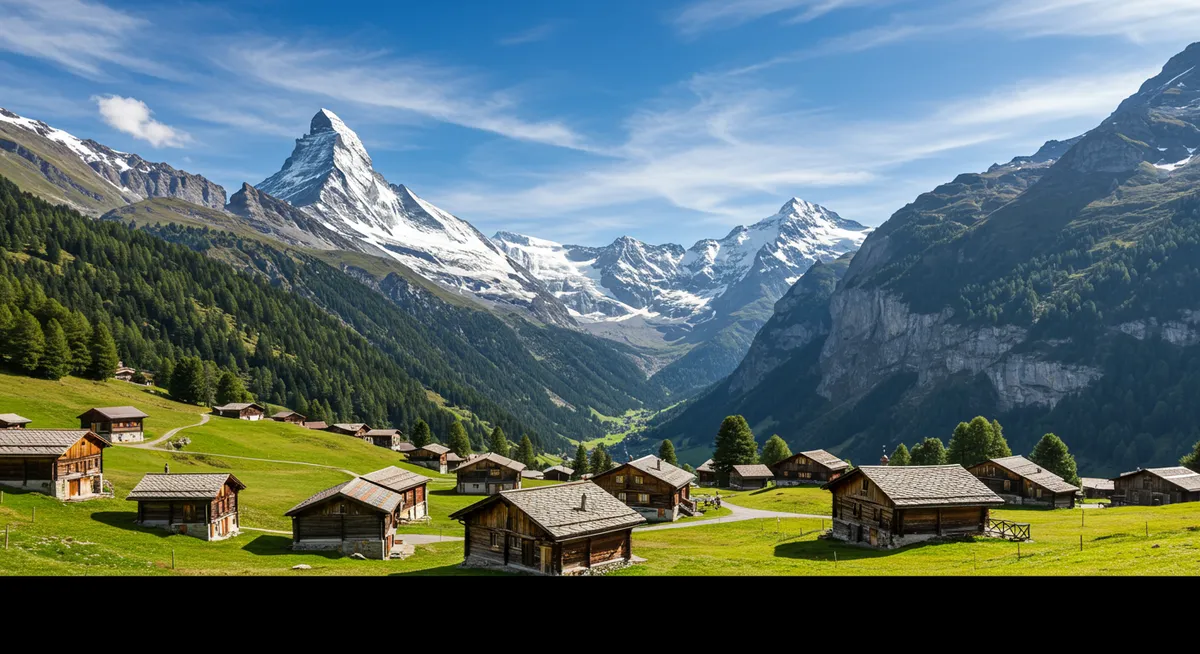
2. Soglio: Italian-Swiss Gem
Perched on a sunny terrace above the Bregaglia Valley near the Italian border, Soglio embodies the perfect fusion of Italian and Swiss Alpine cultures. This exquisitely preserved stone village, which the painter Giovanni Segantini called "the threshold of paradise," offers dramatic views of the Sciora range's granite peaks. With its narrow cobblestone streets, elegant patrician houses, and Mediterranean vegetation juxtaposed against the Alpine backdrop, Soglio presents one of Switzerland's most atmospheric hidden gems.
What Makes It Special
- Cultural Fusion: Unique blend of Swiss Alpine and Italian architectural influences
- Palazzo Salis: Historic 17th-century palace with magnificent gardens open to the public
- Terraced Landscape: Ancient chestnut groves and terraced fields surrounding the village
- Literary Connection: Featured in writings of Rainer Maria Rilke and other notable authors
Local Experiences
Wander the narrow cobblestone streets of the village center, admiring the elegant granite houses with their distinctive sgraffito decorations. Visit the 13th-century Church of St. Lorenzo with its commanding position offering spectacular views of the Sciora group mountains. Explore the beautiful gardens of Palazzo Salis, a historic aristocratic residence with Mediterranean plants and impressive terraced design. Hike ancient mule tracks connecting Soglio with neighboring villages, including the panoramic path to Castasegna through terraced chestnut groves that have sustained the region for centuries.
Getting There
Soglio is located in the Bregaglia Valley in southeastern Switzerland, about 13 km (8 miles) from the Italian border. It's accessible by PostBus from St. Moritz (via Maloja) or from Chiavenna, Italy. The remote location and limited public transportation contribute to its unspoiled character and relative lack of tourists.
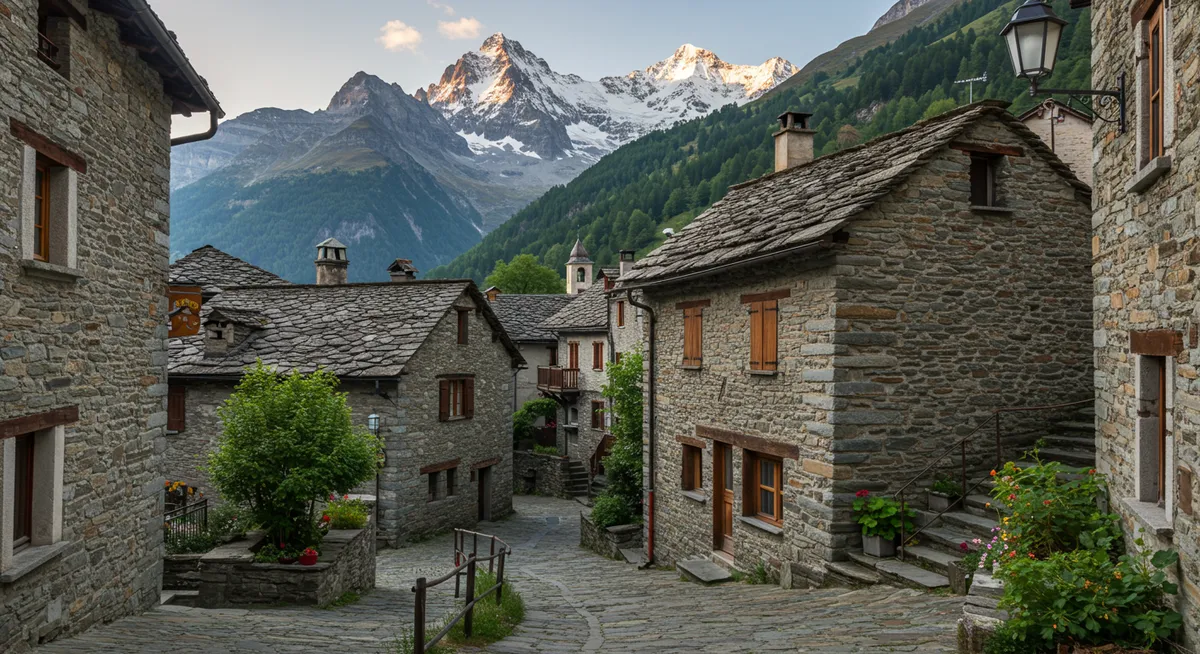
3. Guarda: Engadine Treasure
Perfectly preserved on a sunny slope above the Lower Engadine Valley, Guarda represents one of Switzerland's most remarkable architectural ensembles. This Upper Engadine village, with its distinctive sgraffito-decorated houses and traditional Romansh culture, has been awarded the prestigious "Wakker Prize" for its outstanding preservation efforts. Famous as the setting of the beloved Swiss children's story "Schellenursli" (A Bell for Ursli), Guarda offers visitors an authentic glimpse into the unique culture and traditions of Switzerland's Romansh-speaking regions.
What Makes It Special
- Sgraffito Facades: Intricately decorated house fronts with traditional ornamental patterns
- Romansh Heritage: Living traditions and language belonging to Switzerland's fourth national language
- Literary Significance: Setting of the famous Swiss children's book "Schellenursli"
- Perfectly Preserved: Awarded the Wakker Prize for exemplary conservation of its architectural heritage
Local Experiences
Follow the "Schellenursli Path" through the village, with illustrations from the famous children's book displayed along the route. Admire the elaborate sgraffito decorations on house facades, created using a traditional scratching technique in the plaster to reveal contrasting colors beneath. Join a guided village tour to learn about the unique architectural features, including the distinctive funnel-shaped windows designed to maximize light in the thick-walled houses. Sample regional Engadine specialties like Bündnerfleisch (air-dried beef), capuns (Swiss chard rolls), and nusstorte (nut-filled pastry) at local restaurants.
Getting There
Guarda is located in the Lower Engadine Valley in eastern Switzerland, about 190 km (118 miles) from Zurich. It's accessible by train to Guarda station followed by a shuttle bus to the village, or by PostBus from Scuol. The village itself is largely car-free, with parking available at the entrance.

4. Gruyères: Medieval Alpine Town
Rising atop a hill in Switzerland's Alpine foothills, Gruyères presents a remarkably intact medieval town whose cobblestone streets, ancient buildings, and imposing castle create an atmosphere seemingly plucked from another era. While internationally known for its namesake cheese, this fortified hill town offers much more than dairy products, with its perfect fusion of historical architecture, gastronomic heritage, and stunning mountain views making it one of Switzerland's most enchanting small towns.
What Makes It Special
- Preserved Medieval Core: Car-free old town with original architectural features dating to the 13th century
- Iconic Castle: Imposing 13th-century Château de Gruyères overlooking the Saane Valley
- Culinary Heritage: Home to world-famous Gruyère cheese and distinctive regional cuisine
- Artistic Connections: Houses museums dedicated to H.R. Giger (of "Alien" fame) and Tibetan art
Local Experiences
Explore the magnificent Château de Gruyères, touring its impressive halls, towers, and gardens that offer insights into eight centuries of regional history. Visit La Maison du Gruyère cheese dairy to witness traditional cheese-making and learn about the region's dairy farming heritage. Sample authentic regional cuisine at traditional restaurants serving specialties like fondue moitié-moitié (half Gruyère, half Vacherin cheese) and meringues with Gruyère double cream. Discover the unexpected H.R. Giger Museum, housing works by the Oscar-winning Swiss artist known for designing the creature in the movie "Alien," creating a surreal contrast with the medieval surroundings.
Getting There
Gruyères is located in Switzerland's Fribourg canton, about 40 km (25 miles) northeast of Lausanne. It's accessible by train to Gruyères station followed by a short bus ride to the town, or directly by car with parking available below the town walls. The old town itself is entirely pedestrianized.
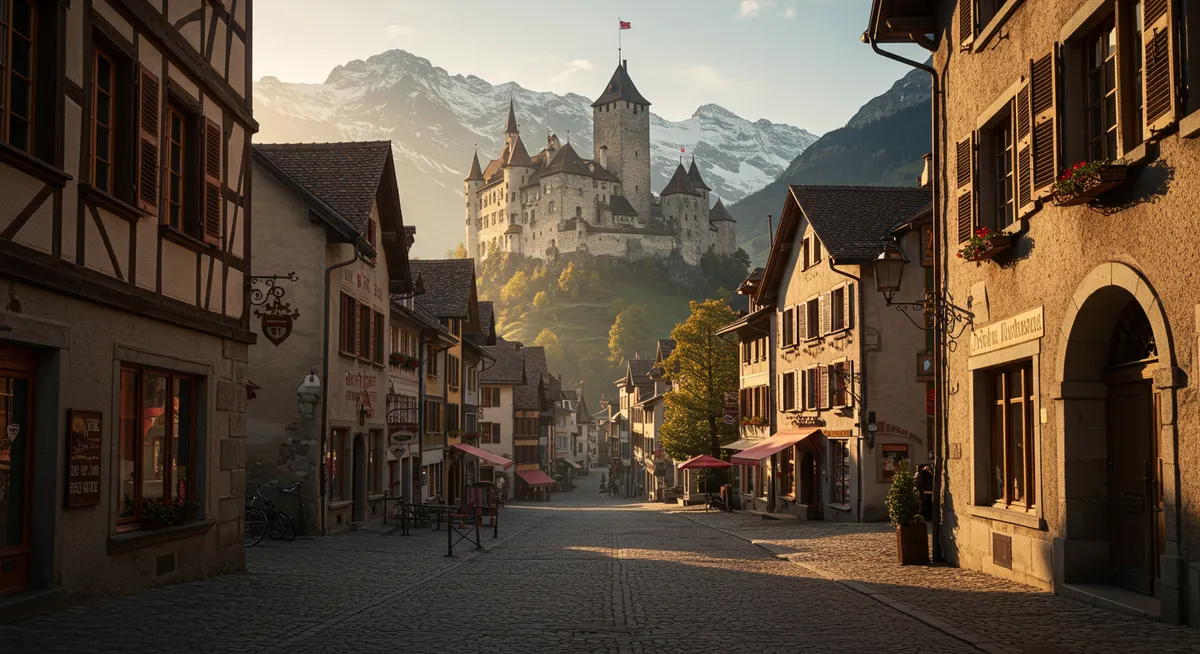
5. Evolène: Authentic Valais Village
Nestled in the Val d'Hérens, one of the most traditional valleys in the Valais canton, Evolène represents a remarkable preservation of authentic Alpine culture. With its distinctive blackened wooden houses, residents who still don traditional dress for special occasions, and continuation of ancient customs, this village offers one of Switzerland's most genuine cultural experiences. Despite being surrounded by 4,000-meter peaks and offering excellent hiking and skiing, Evolène remains largely undiscovered by international tourists.
What Makes It Special
- Living Traditions: One of the few places where traditional costumes are still worn for special occasions
- Distinctive Architecture: Sun-blackened wooden "raccards" (granaries) and stone-based houses
- Carnival Heritage: Home to one of Switzerland's most authentic carnival celebrations featuring "peluches" (traditional wild men figures)
- Patois Language: Local Franco-Provençal dialect still spoken by many residents
Local Experiences
Explore the village's narrow streets lined with traditional sun-blackened wooden houses with bright geraniums adorning the balconies. Visit during the February carnival to witness the famous "peluches" parade, where locals dressed in fearsome costumes made of animal skins, sheep wool, and carved wooden masks enact ancient fertility rituals. Hike to surrounding alpine hamlets like Villa and La Sage, which offer additional examples of traditional Valais architecture. Sample local alpine cuisine featuring mountain cheese, dried meats, and specialties like cholera (vegetable and cheese pie) at family-run restaurants.
Getting There
Evolène is located in the French-speaking part of Valais canton, about 170 km (105 miles) east of Geneva. It's accessible by PostBus from Sion, which has train connections to major Swiss cities. The relative isolation has helped preserve its authentic character and traditions.
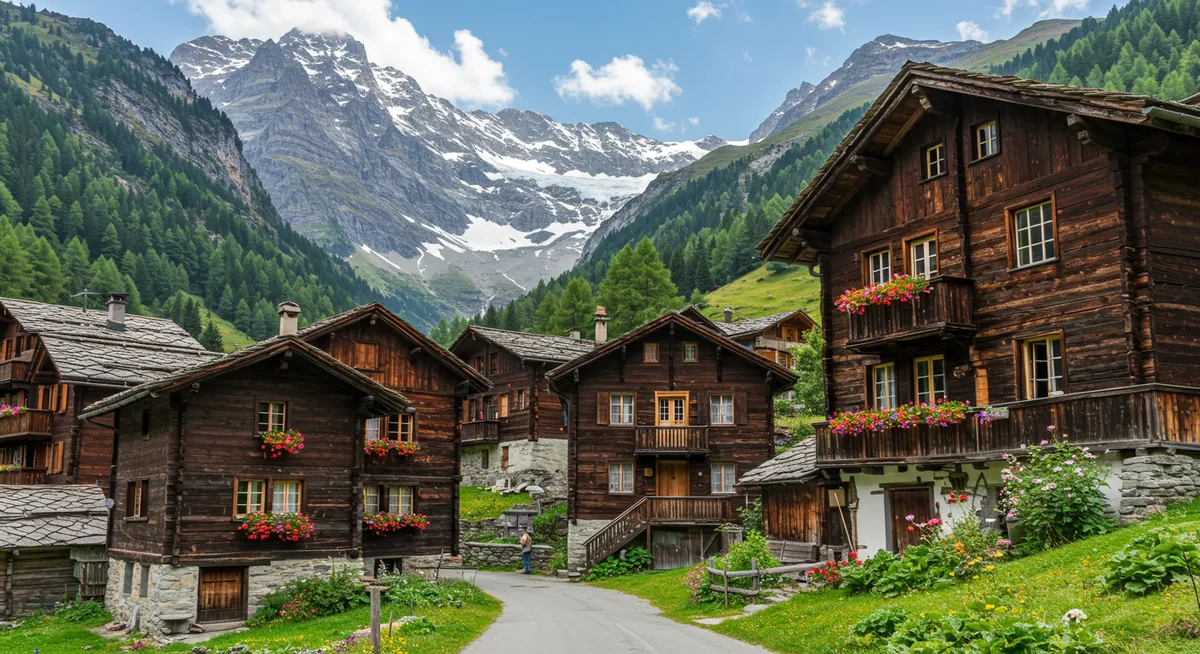
6. Splügen: Mountain Pass Village
Situated at the foot of the historic Splügen Pass connecting Switzerland and Italy, this remarkably preserved village in Graubünden's Rheinwald Valley offers a compelling glimpse into Alpine trading history. With its distinctive combination of Italian-influenced Palazzi and northern Alpine wooden houses, Splügen reflects its centuries-old role as a cultural crossroads. Despite its historical significance and architectural richness, the village remains largely unknown to international visitors, offering an authentic experience of Swiss mountain life.
What Makes It Special
- Architectural Contrast: Unique combination of stately Italian-influenced stone houses and traditional wooden structures
- Historical Trade Route: Located on the ancient Splügen Pass that connected northern Europe with Italy
- Protected Heritage: Designated as a site of national significance in Switzerland
- Winter Sports Heritage: One of Switzerland's oldest ski areas with minimal development
Local Experiences
Wander through the village's central square with its impressive collection of 16th to 18th-century stone houses built by wealthy merchant families. Drive or cycle the historic Splügen Pass road with its remarkable 19th-century engineering featuring tight switchbacks and dry-stone retaining walls. Visit the local heritage museum (Heimatmuseum) housed in a traditional Walser house to learn about the region's cultural and economic history. In winter, enjoy skiing on uncrowded slopes at the small but charming Splügen-Tambo ski area, which maintains a traditional Alpine atmosphere.
Getting There
Splügen is located in Graubünden canton, about 170 km (105 miles) southeast of Zurich. It's accessible by PostBus from Chur or Thusis, both of which have train connections to major Swiss cities. The village sits just off the A13 motorway that runs through the San Bernardino tunnel.
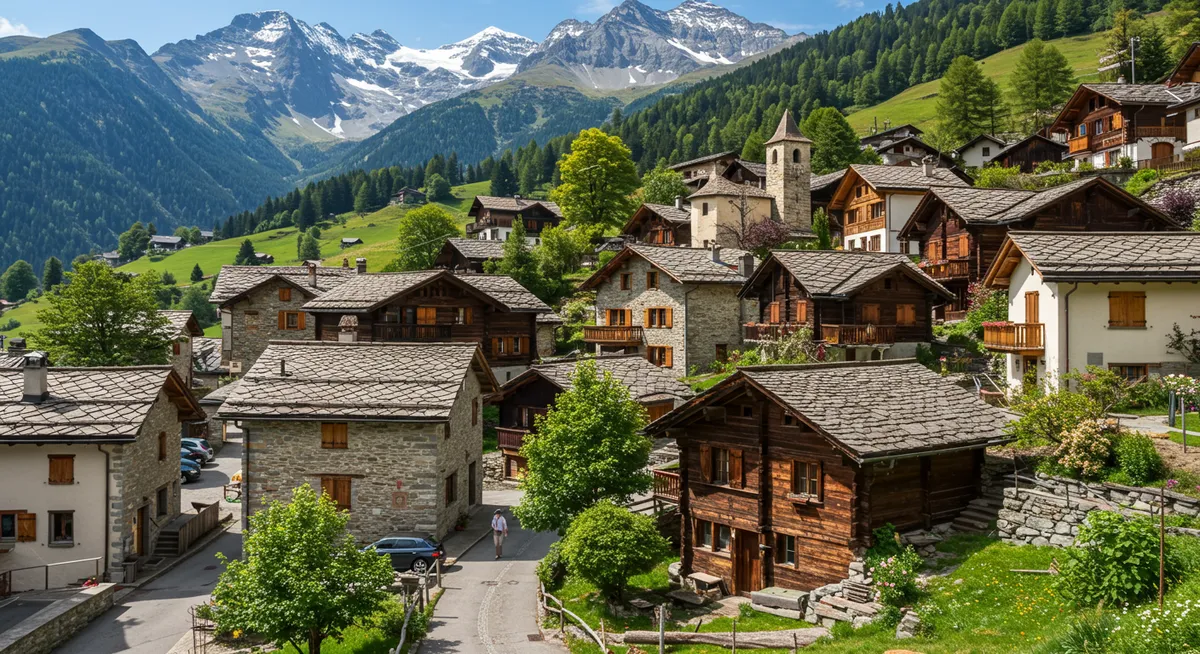
7. Morcote: Lakeside Jewel
Cascading down a steep hillside to the shores of Lake Lugano in Switzerland's Italian-speaking Ticino region, Morcote combines Mediterranean charm with Alpine splendor. Once a simple fishing village, this architectural gem features arcaded waterfront buildings, narrow vertical lanes, and a dramatic hillside church accessed by a 400-step stairway. Despite being recognized as "Switzerland's Most Beautiful Village" in 2016, Morcote remains refreshingly authentic and uncrowded compared to better-known Swiss lake destinations.
What Makes It Special
- Mediterranean Atmosphere: Italian architectural influence with arcaded promenades and pastel-colored buildings
- Dramatic Setting: Steep hillside position offering spectacular views across Lake Lugano
- Botanical Gardens: Home to the Scherrer Park with its extraordinary collection of subtropical plants and architectural follies
- Religious Heritage: Impressive Santa Maria del Sasso Church and historic cemetery with remarkable monuments
Local Experiences
Climb the 400-step stone stairway to the Church of Santa Maria del Sasso, admiring its 16th-century frescoes and panoramic lake views from the terraced cemetery. Explore Parco Scherrer, a botanical garden created by textile merchant Hermann Arthur Scherrer, featuring Mediterranean and Asian plants alongside architectural elements from various cultures. Stroll the lakeside promenade with its arcaded buildings housing restaurants and shops selling local products. Enjoy traditional Ticinese cuisine featuring risotto, polenta, and fresh lake fish at waterfront restaurants with views across Lake Lugano toward Monte San Salvatore.
Getting There
Morcote is located in Ticino canton, about 10 km (6 miles) south of Lugano. It's accessible by bus from Lugano or by boat during the summer season. During peak times, parking can be limited, making public transportation the preferred option.

8. Tschlin: Remote Engadine Hamlet
Perched high above the Inn Valley near the Austrian border, Tschlin represents one of Switzerland's most remote and unspoiled mountain villages. At an elevation of 1,550 meters, this traditional Romansh settlement with fewer than 200 inhabitants offers a glimpse into an Alpine lifestyle largely unchanged by modern tourism. Known for its organic beer brewery, distinctive Engadine architecture, and spectacular mountain panoramas, Tschlin provides a genuine experience of traditional Swiss mountain culture far from the tourist trail.
What Makes It Special
- Remote Location: One of the Swiss Alps' most isolated villages, preserving authentic mountain traditions
- Bun Tschlin: Award-winning organic beer brewery embracing sustainable local production
- Romansh Culture: Living traditions and language of Switzerland's smallest linguistic group
- Historical Architecture: Well-preserved traditional Engadine houses dating back several centuries
Local Experiences
Visit the Bieraria Tschlin, Switzerland's highest brewery, which produces organic beer using local mountain spring water and regionally grown ingredients. Hike the panoramic trail to Vna, a neighboring hamlet with spectacular views across the Lower Engadine Valley toward the Austrian Alps. Learn about the endangered Romansh language and culture through conversations with local residents who still speak this ancient Latin-derived language daily. Sample traditional Engadine specialties at the village's only restaurant, where seasonal, locally sourced ingredients feature prominently.
Getting There
Tschlin is located in the Lower Engadine Valley in eastern Switzerland, near the Austrian border. It's accessible by PostBus from Scuol-Tarasp, which has train connections to major Swiss cities. The journey to reach this remote village is part of its charm, with the final stretch offering spectacular views across the Inn Valley.

Travel Tips for Visiting Swiss Alpine Villages
To make the most of your experience exploring these enchanting destinations, consider these practical recommendations:
Best Time to Visit
Late spring (mid-May to June) offers flowering Alpine meadows and shoulder season tranquility, though some mountain facilities may still be closed. Summer (July-August) brings perfect hiking weather and full operation of mountain lifts, but represents peak season in most villages. Early autumn (September-early October) provides beautiful fall colors, harvest festivals, and fewer crowds as summer tourists depart. Winter experiences vary dramatically, with some villages becoming ski resorts while others become remarkably quiet, offering authentic winter landscapes without ski infrastructure.
Transportation
Switzerland's exceptional public transportation system makes even remote villages accessible without a car. The Swiss Travel Pass covers trains, buses, boats, and many mountain lifts, providing excellent value for exploring multiple destinations. Many villages are partially or entirely car-free, requiring you to park at designated areas and continue on foot. Consider staying in one region rather than trying to see too many areas, as travel times between Alpine valleys can be significant despite relatively short distances as the crow flies.
Accommodations
Book well in advance for summer (July-August) visits, as even in lesser-known villages, accommodations can fill quickly during peak season. Consider staying in family-run guesthouses or historic hotels for more authentic experiences than chain properties offer. Look for properties with the "Swiss Historic Hotels" designation to experience carefully preserved historic accommodations. Many traditional buildings do not have elevators, so request ground-floor rooms if stairs present a challenge.
Cultural Awareness
Be mindful that many Alpine villages are living communities, not open-air museums, so respect private property and local customs. Switzerland has four national languages (German, French, Italian, and Romansh), with each region having distinct cultural traditions. Learning a few basic greetings in the local language is always appreciated. Many Alpine villages observe quiet hours, typically from 12-2 pm and after 10 pm, when noisy activities are discouraged out of respect for residents.
Pro Tip: Many Swiss Alpine villages host traditional seasonal festivals that offer unique insights into local culture. Research festival dates in advance—these celebrations provide authentic cultural experiences that few tourists witness, though accommodations will be scarcer during these events.
Planning Your Swiss Alpine Village Itinerary
These eight villages represent just a sampling of Switzerland's hidden Alpine treasures. Consider exploring them as part of these regional itineraries:
- Bernese Oberland Journey: Combine Mürren with other villages in the Jungfrau Region for dramatic mountain scenery and excellent hiking
- Engadine Exploration: Link Guarda and Tschlin with other historic settlements in this unique cultural region known for its architecture and Romansh heritage
- Italian-Swiss Border Tour: Connect Soglio and Morcote with stops in other Ticino and Graubünden villages for a fascinating blend of Alpine and Mediterranean influences
- Valais Discovery: Pair Evolène with other traditional villages in this distinctive canton known for its sunny climate, unique dialect, and 4,000-meter peaks
For those looking to expand their hidden gem exploration beyond Switzerland, our guides to Germany's fairytale towns and medieval villages in Italy offer perfect complements to your Alpine adventures.
Related Hidden Gem Towns
If you enjoy discovering Alpine villages in Switzerland, you might also appreciate these similar destinations in nearby mountain regions:
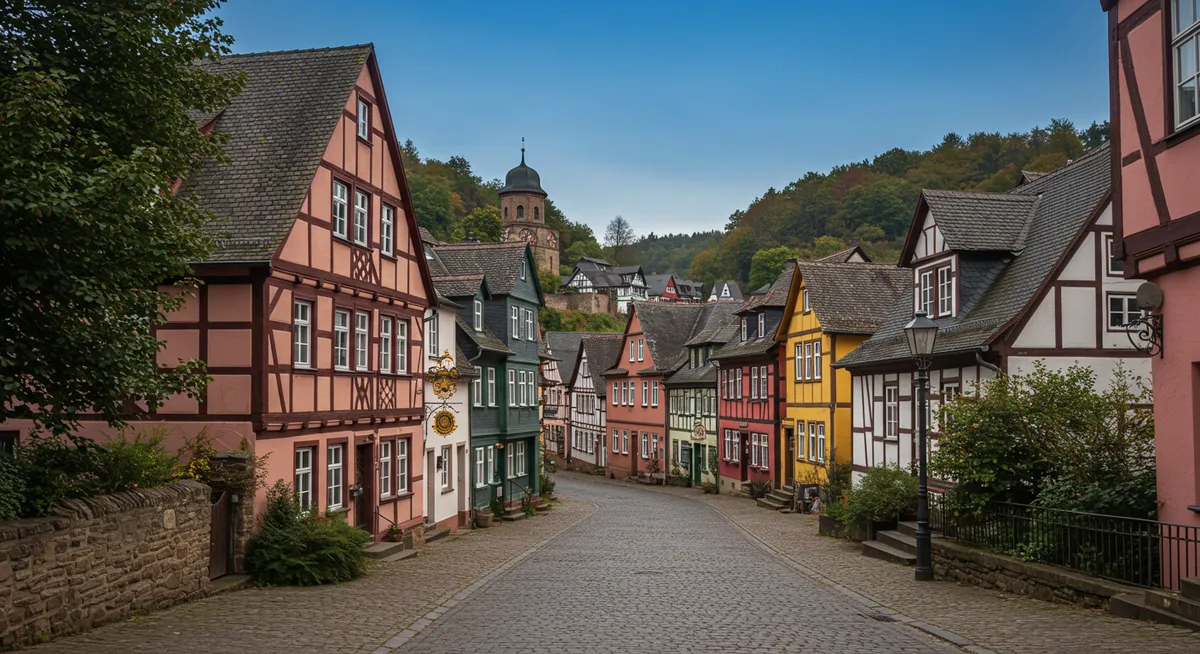
Germany's Fairytale Towns
Discover charming German Alpine towns that share cultural and architectural similarities with Swiss villages.

Villages in Southern France
Explore Alpine-influenced villages like Saorge in France that offer mountain charm similar to Swiss towns.

Undiscovered Gems of the Balkans
Discover Slovenia's mountainous villages that share Alpine influences with their Swiss counterparts.
Explore More Hidden Gem Towns
Discover more enchanting under-the-radar destinations across Europe and beyond.